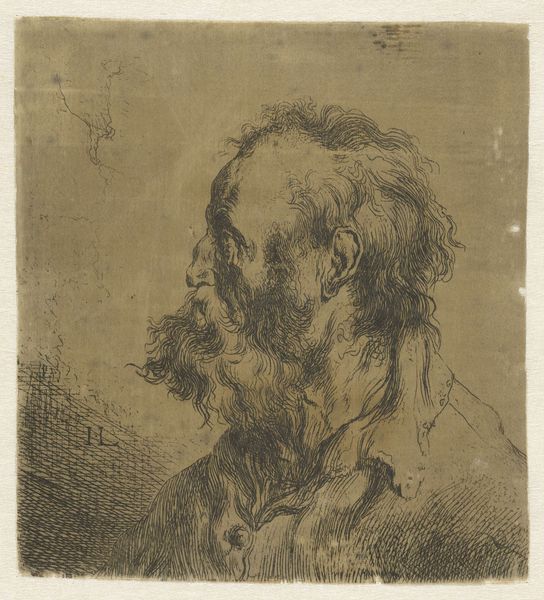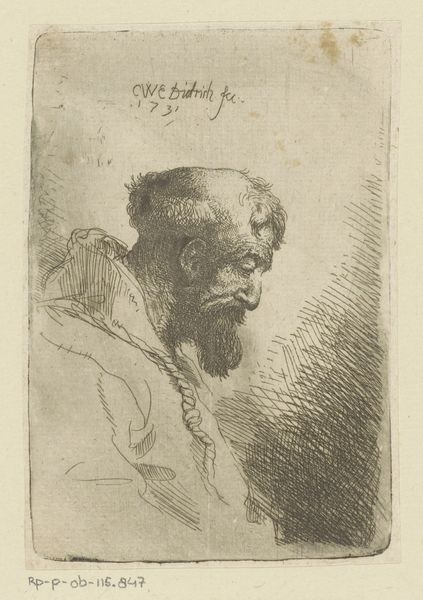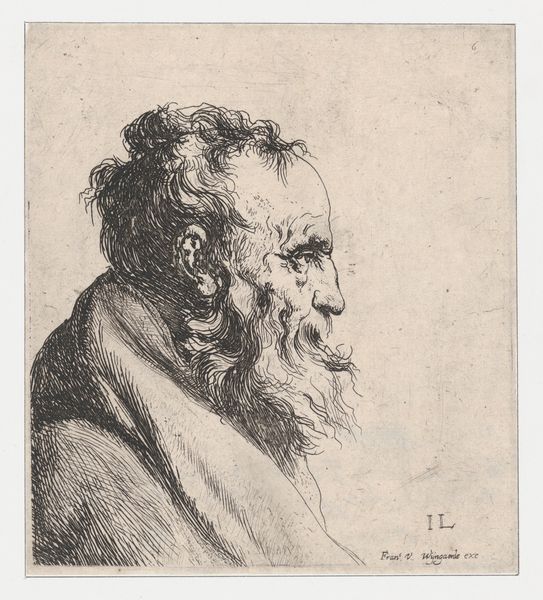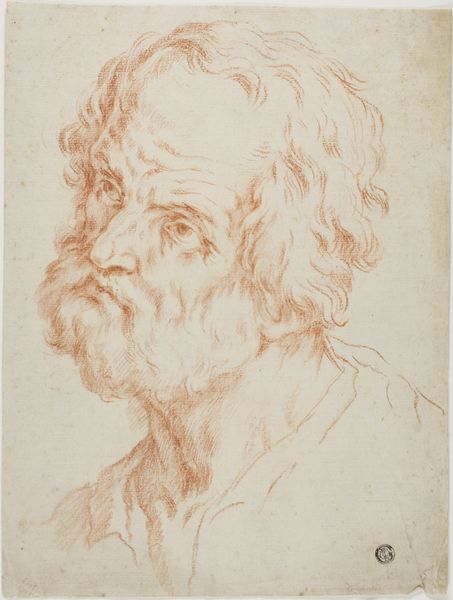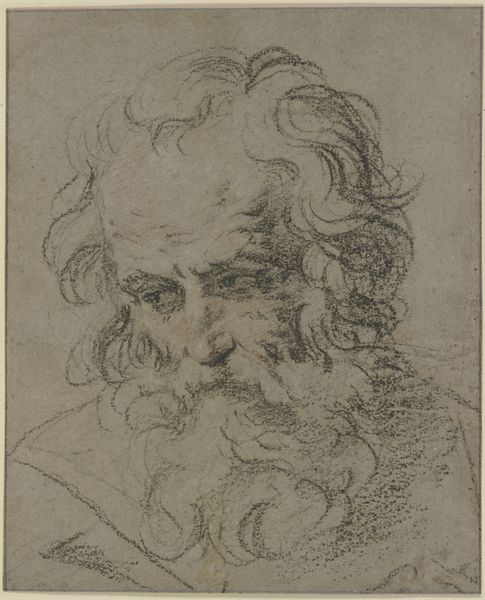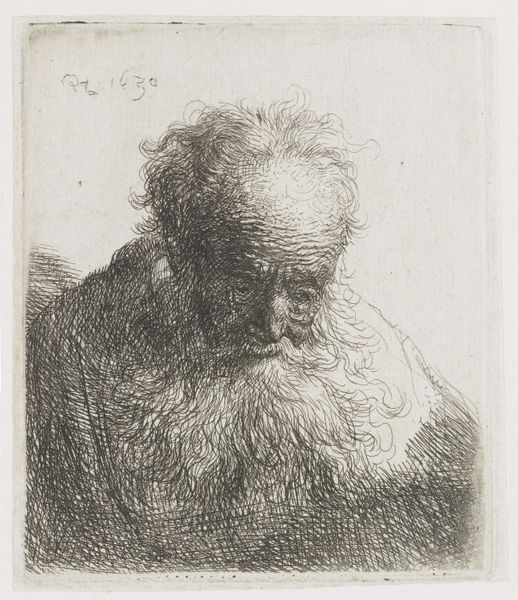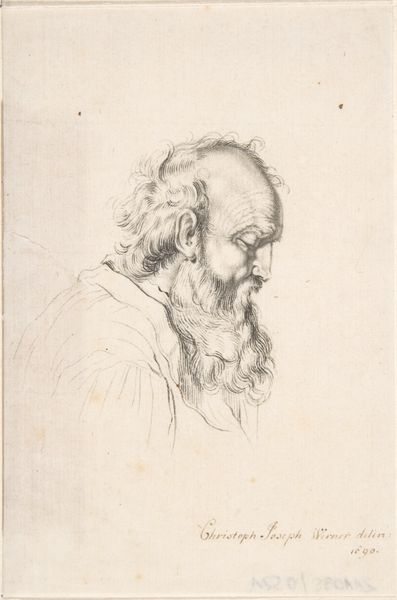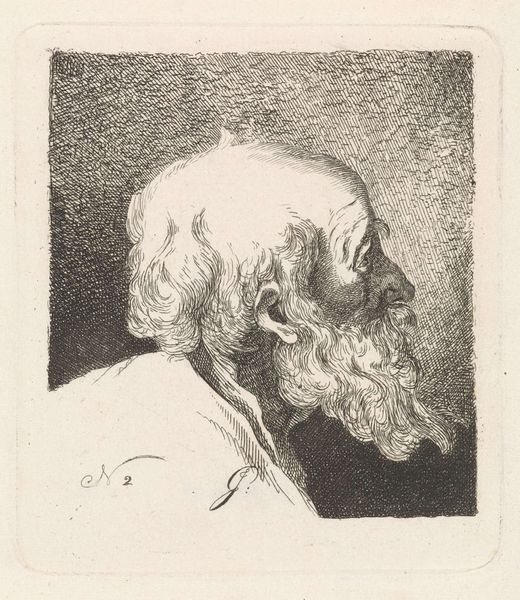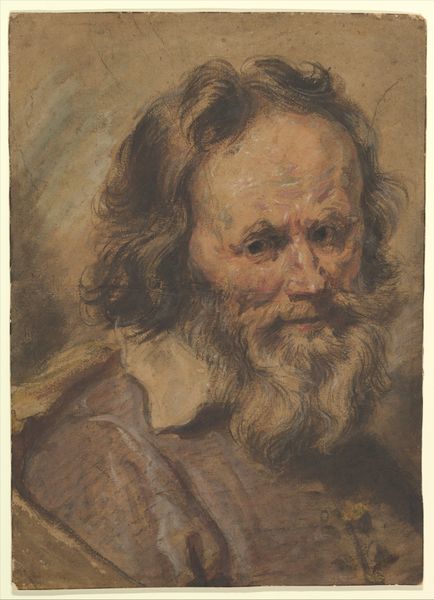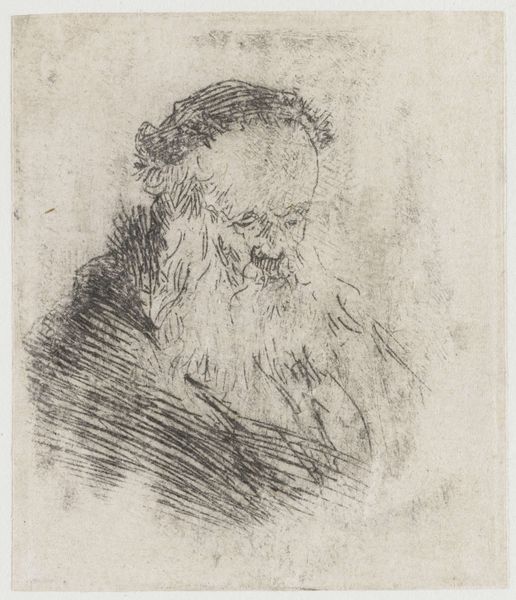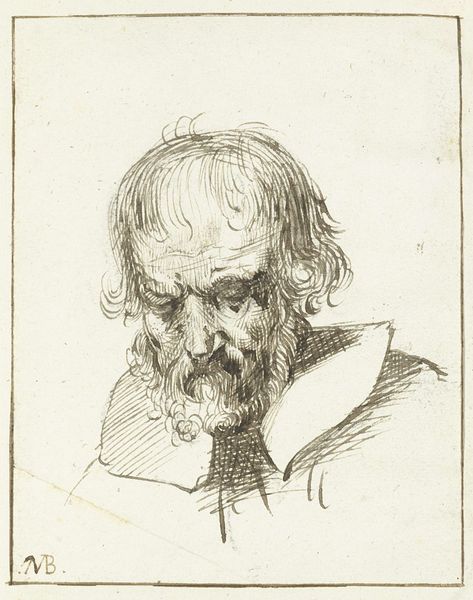
print, etching
#
portrait
#
baroque
# print
#
etching
#
figuration
#
portrait drawing
Dimensions: sheet (trimmed within plate mark): 15.6 x 14.3 cm (6 1/8 x 5 5/8 in.)
Copyright: National Gallery of Art: CC0 1.0
Jan Lievens created this Bust of a Bearded Old Man sometime in the 17th century, using the etching process. Look closely and you can see the etched lines, which vary in weight to create shading and texture. The artist would have coated a metal plate with wax, then used a needle to draw this image, exposing the metal underneath. The plate was then immersed in acid, which bit into the drawn lines. Finally, the plate would be inked and pressed onto paper, transferring the image. This process, though indirect, allowed for the relatively easy creation of multiples. Etching emerged in the 16th century, and it allowed artists to produce images on a small scale, in multiples. This increased the distribution of images dramatically, contributing to the circulation of ideas and the growth of a market for prints. This print shows us how so-called 'fine art' is dependent on materials and processes, and how the rise of capitalism helped artists distribute their work.
Comments
No comments
Be the first to comment and join the conversation on the ultimate creative platform.
